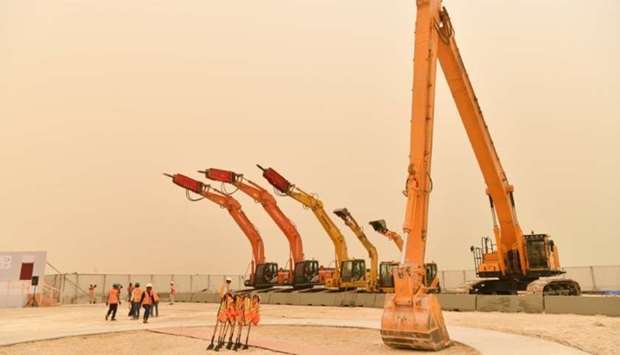A sustainable solution for surface and storm water discharge into the sea to prevent the flooding of tunnels has become one step closer with the QR920mn Mesaimeer Pump Station and outfall tunnel projects getting off to a start.
Ashghal president Saad bin Ahmad al-Muhannadi inaugurated the works, which includes the construction of a pumping station with 10 pumps and auxiliary facilities. The station will be located at the end of Mesaimeer Tunnel, south of Hamad International Airport. The project also includes the construction of a 10km tunnel of 3.7m diameter.
Mesaimeer Pump Station and Outfall Tunnel is the second phase of the Mesaimeer Surface and Ground Water Drainage Tunnel Project, meant to augment surface and storm water discharge.

Ashghal officials at the formal start of the works
The pumping station, to be operated at a capacity of 19.7cu m per second, is being built to pump water from Mesaimeer Tunnel, built in 2016, to the new outfall tunnel.
The project is designed to ensure the preservation of the marine environment, as the water, which will be pumped complies with the environmental assessment standards, and discharged 10km offshore to reduce the effect on the marine environment.
The project is scheduled to be completed in the last quarter of 2021 with a maintenance and operation period of three years. It is a joint venture of Hamad Bin Khalid Contracting Company and Porr Qatar Construction Company.
The project management services has been assigned to Mott MacDonald Ltd. who will oversee the design, implementation and operation of the project.
Mesaimeer Tunnel is one of the projects implemented by Ashghal in the development of drainage networks. Last year the project won the global best project award in the wastewater category, during the Engineering News Record Global Best Projects Awards in New York City, in the presence of a group of the largest international companies executing mega construction projects.
The tunnel extends below the G-Ring Road for 10km with a depth of about 30m below the ground surface. This main tunnel is linked to the existing and planned drainage networks in the areas that traverse through, and will collect and discharge surface water from approximately 170sq km of catchment area, as it is connected to rain water drainage networks in 22 tunnels.



